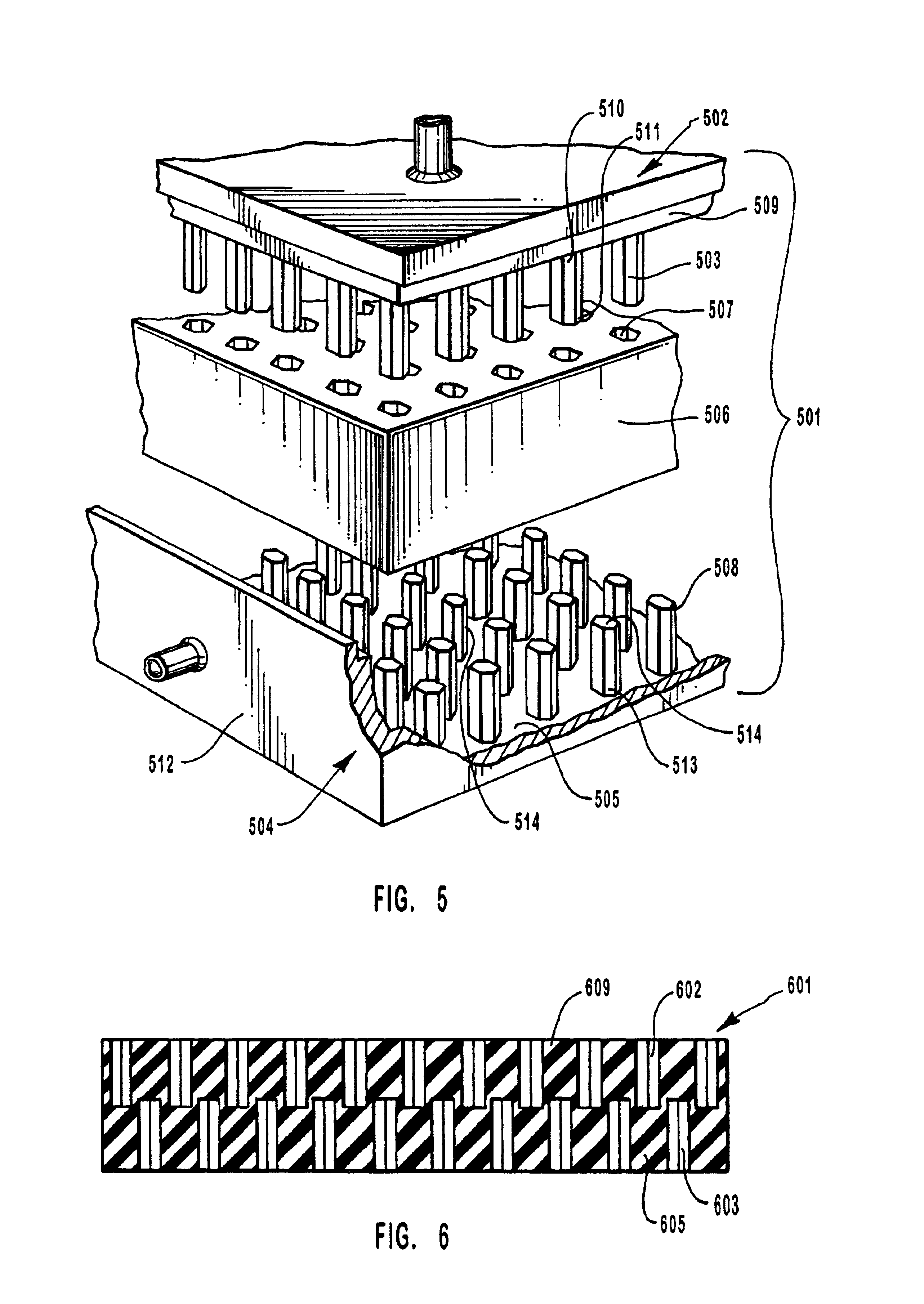Cushioning devices, gelatinous elastomer materials, and devices made therefrom
a technology of gelatinous elastomers and cushions, which is applied in the field of cushions, can solve the problems of discomfort and tissue damage of users of cushions, and achieve the effects of reducing bleed, reducing head pressure, and reducing discomfort and tissue damag
- Summary
- Abstract
- Description
- Claims
- Application Information
AI Technical Summary
Benefits of technology
Problems solved by technology
Method used
Image
Examples
example 1
[0420]The material of Example 1 includes eight parts LP 150 mineral oil to one part SEPTON 4055.
[0421]
8:1AverageHigh ValuePercent Elongation23752400PSI at Failure185190
[0422]In comparison, the material of Chen's patents that has an oil to elastomer ratio of 4:1, which should have higher strength than Applicant's 8:1 material of Example 1, instead exhibits much lower elongation and PSI at failure (i.e., tensile strength) values. The material of Example 1 elongates up to about 2,400%, which is 700% greater elongation than Chen's 4:1, which is capable of only 1700% elongation (See, e.g., '213 patent, Table I, col. 6, lines 18-38). Likewise, the tensile strength at break of Chen's 4:1 gel is only about 4×106 dyne / cm2, or 58 psi. Thus, the 8:1 material of Example 1 is at least three times as strong as Chen's 4:1. This is an unexpectedly good result since the conventional wisdom concerning gels is that more oil results in less strength. Applicant doubled the amount of oil used (8:1 compar...
example 2
[0423]The material of Example 2 includes five parts LP 150 mineral oil to one part SEPTON 4055.
[0424]
5:1AverageHigh ValuePercent Elongation19752030PSI at Failure335352
[0425]A comparison of the 5:1 material of Example 2 to the 4:1 material of Chen's patents shows that Chen's material exhibits much lower elongation and PSI at failure (i.e., tensile strength) values. The material of Example 2 elongates up to about 2,000%, which is about 300% more than Chen's 4:1, which is capable of only 1700% elongation (See, e.g., '213 patent, Table I, col. 6, lines 18-38). Likewise, the tensile strength at break of Chen's 4:1 gel is only about 4×106 dyne / cm2, which translates to only about 58 psi. Thus, the 5:1 material of Example 2, despite the presence of about 25% more oil than Chen's 4:1 material, is about five-and-a-half times as strong as Chen's 4:1.
example 3
[0426]The material of Example 3 includes three parts LP 150 mineral oil to one part SEPTON 4055.
[0427]
3:1AverageHigh ValuePercent Elongation15551620PSI at Failure404492
[0428]A consideration of both Example 2, a material having a 5:1 oil to elastomer ratio, and Example 3, a material having a 3:1 oil to elastomer ratio, indicates that a material with a 4:1 oil to elastomer ratio would compare very favorably to the gel disclosed in U.S. Pat. No. 5,508,334, which issued in the name of John Y. Chen. According to Table I in the '334 patent, Chen's 4:1 KRATON® G-1651-containing material had a breaking strength (i.e., tensile strength) value of 4×106 dyne / cm2, which translates to only about 58 psi.
[0429]The elongation at break value was mysteriously omitted from Table I of the '334 patent and other Chen patents. However, reference to Table I of Chen's first two issued patents (the '284 and '213 patents) sets the percent elongation of Chen's 4:1 material at about 1700. Applicant suspects tha...
PUM
| Property | Measurement | Unit |
|---|---|---|
| diameter | aaaaa | aaaaa |
| diameter | aaaaa | aaaaa |
| length | aaaaa | aaaaa |
Abstract
Description
Claims
Application Information
 Login to View More
Login to View More - R&D
- Intellectual Property
- Life Sciences
- Materials
- Tech Scout
- Unparalleled Data Quality
- Higher Quality Content
- 60% Fewer Hallucinations
Browse by: Latest US Patents, China's latest patents, Technical Efficacy Thesaurus, Application Domain, Technology Topic, Popular Technical Reports.
© 2025 PatSnap. All rights reserved.Legal|Privacy policy|Modern Slavery Act Transparency Statement|Sitemap|About US| Contact US: help@patsnap.com



